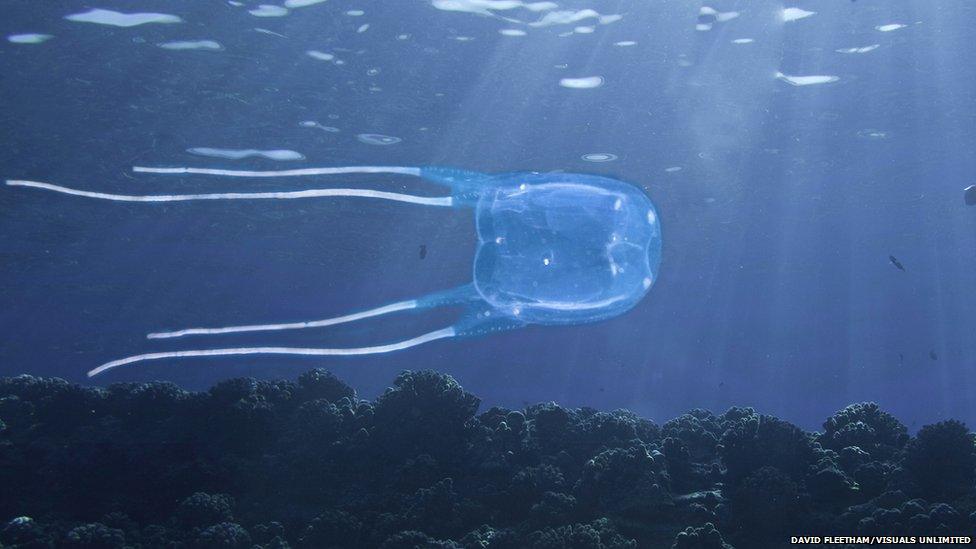Newsround's guide to some of nature's most painful stingers
- Published

Box jellyfish are the most venomous animals in the world - a small one has enough venom to kill at least 20 people. They are a hazard to swimmers because they're difficult to see. [Photo: David Fleetham/Science Photo Library]
Stinging jellyfish have clumps of stinging cells called nematocysts which line their tentacles. Brushing against the tentacles activates the nematocysts, which fire venom into the skin like thousands of tiny injections. [Photo: SPL]
Scorpions have a large stinging tail that contains poison which paralyses its prey. They were among the first animals to adapt to life on land 420 million years ago. They come from the same family of animals as spiders - a group called the arachnids. [Photo: Pascal Goetgheluk/Science Photo Library]
Plants can sting too! Stinging nettles are easy to recognise by their appearance - and their sting! The whole plant is covered in sharp stinging hairs which also contain a cocktail of chemicals that irritates our skin. The stingers help nettles avoid being eaten by animals! [Photo: AFP]
Honey bees are well known for making honey - and for their painful stingers. Only female worker bees sting: a barbed stinger can snap off in thick human skin, killing the bee. The Queen bee has a smooth stinger and can attack multiple times without harming herself.
Stingrays are a type of fish found in tropical waters. They have a barbed stinger on their tail and their sting is extremely painful. Luckily they only use their stingers in self-defence, often when they are stepped on by people. [Photo: SPL]
The bullet ant is the biggest ant in the world and its sting is considered the most painful. A sting from the bullet ant is so painful it could leave even an experienced adventurer like Steve Backshall in pain for 24 hours! [Photo: Martin Shields/Science Photo Library]
